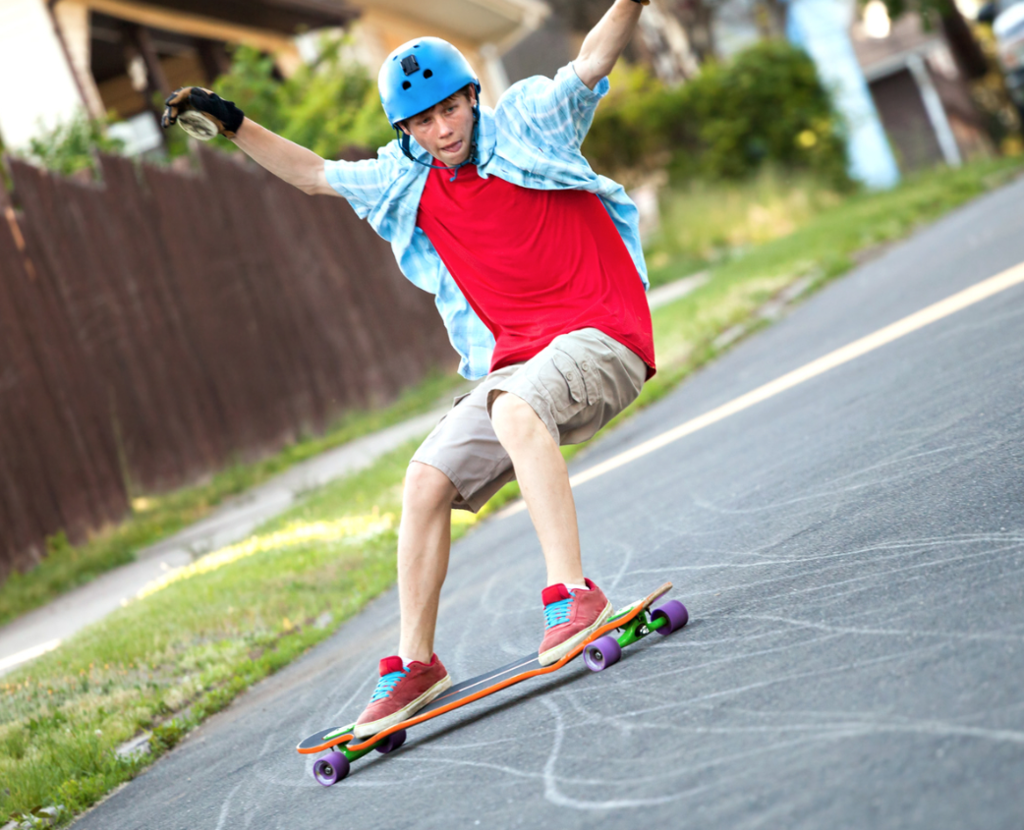Things you need to know before you longboard:
Looking for a detailed guide on how to start longboarding? Look no further.
The first thing you’ll need is a board.
Your first board should be something easy to ride, and relatively inexpensive, such as a Magneto Long board.
Having a cheap, but sturdily build board will ensure that you are not afraid to thrash it and wreck it, however have a relatively easy time learning how to ride it.
Having a relatively large standing platform will help as well, anything from 38-40 inches long will give you enough room to stumble and explore.
For your first board, aim to buy a pre-built complete, as you can hop on and start riding right away!
Learn to push.
It may look easy, but learning to push well can be a chore. However, this is a fundamental skill that you must absolutely learn. Without pushing, you will not get anywhere, and without getting anywhere, standing on a longboard will be, well, literally standing on a longboard. You don’t want that. You want to be gliding over sidewalks at speeds exceeding a jogger! Some tips:
Bend your knees! Bending your knees will help you reach the ground and get a stronger push. Practice riding with one foot on the board! This will help you balance as you push.
Push from the front of your board, all the way to the back of your board. Having a strong, full stride will have you going much further than you would if you hadn’t had a strong, full stride.
Learn to bail.
Falling off your board is something you’ll be doing all the time as a longboarder, beginner or not. So, it’s a good idea to learn how to bail. Now, everyone bails differently. Some people aim for grass, some people deck themselves out with full pads, but I always find that rolling is the best way to bail. (Only at low speeds, of course.) This means that when you fall, you roll as soon as you reach the ground. This makes sure that you don’t get any road rash, and that all your skin stays intact throughout the bail, which is always a nice thing. And as always, wear a helmet!
Learn to stop.
Footbraking seems simple; you put your foot down on the ground and drag, right? But it isn’t as simple as you might think. It takes practice.
First, start by practicing riding your board with your front foot on your board and nothing else. The foot should be facing forwards. Just balance on your board, up to a decent rolling speed. Think about how ast you’ll probably be going when you’re cruising.
Second, bend the knee of the leg that is on the board. Remember to keep your foot facing forward and your other foot next to this foot, hanging in the air. Bend it so that your upper body is moving straight up and down, and not forwards or backwards. Think that you are doing squats.
Third, place the heel of the foot that is off of the board on the ground, and let it drag. Don’t apply any pressure, but make sure to keep your foot up and parallel to the ground.
Fourth, start applying a bit of pressure to stop better. Now you can stop!
Learn to turn.
This is the last and most complicated step, as learning to turn impulsively and getting familiar enough with the board to think of it as an extension of your own body is quite hard. For this, you will just need tons of practice and experience. Remember, G-force and leaning are your best friends!
Go and get a board! You’ll have fun. Always wear a helmet!
